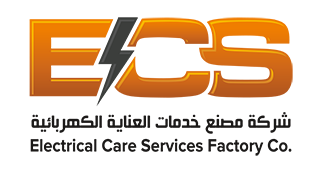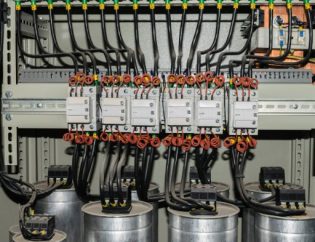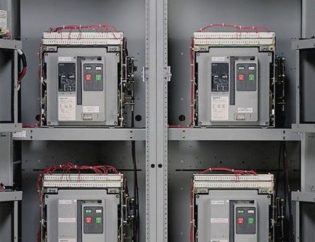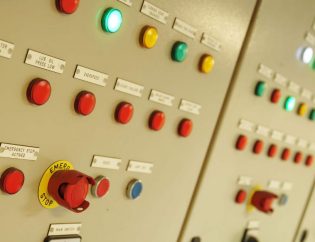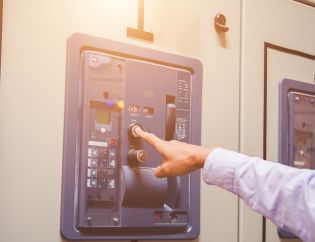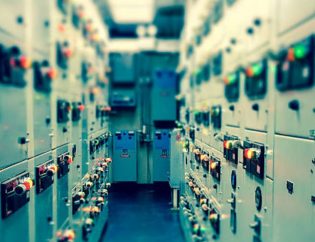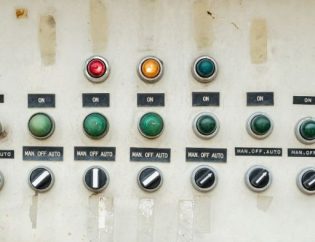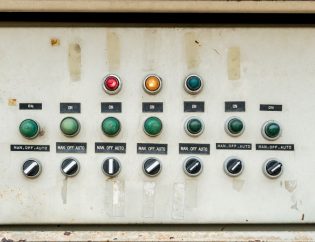Energy-Saving Features:
Modern control panels come equipped with energy-saving features that optimize system performance and reduce energy consumption. These features include:
Integration with Smart Thermostats:
Upgrading to a control panel that integrates with smart thermostats allows for precise temperature control and scheduling. Smart thermostats adapt to occupancy patterns, weather conditions, and user preferences, ensuring optimal comfort while minimizing energy waste.
Demand-Based Ventilation Control:
Control panels with demand-based ventilation control adjust the airflow and ventilation rates based on actual occupancy levels. By optimizing ventilation, energy consumption is reduced without compromising indoor air quality.
Occupancy Sensors:
Incorporating occupancy sensors in your control panel enables efficient zone management. Sensors detect occupancy and adjust the HVAC settings accordingly, reducing energy waste in unoccupied areas.
Advanced Automation and Control:
Modern control panels offer advanced automation and control capabilities, providing greater customization and convenience. Consider the following features:
Programmable Logic Controllers (PLCs):
Upgrading to a control panel with PLCs allows for customized programming and scheduling. PLCs offer flexibility in controlling various HVAC functions, such as temperature, humidity, and airflow, based on specific time schedules or occupancy patterns.
- Remote Access and Monitoring:
Control panels with remote access and monitoring capabilities enable users to control and monitor their HVAC system from anywhere using smartphones, tablets, or computers. This feature enhances convenience and allows for immediate adjustments and troubleshooting.
- Integration with Building Automation Systems:
Control panels that integrate with building automation systems enable centralized management and coordination of multiple building systems. Integration facilitates seamless communication between HVAC, lighting, and security systems, optimizing overall building performance.
Enhanced User Interface
Modern control panels feature intuitive user interfaces that improve user experience and ease of operation. Consider the following enhancements:
Touchscreen Displays:
Upgraded control panels often include user-friendly touchscreen displays, making it easier to navigate menus, adjust settings, and monitor system performance. Touchscreen interfaces enhance user interaction and provide a more modern and intuitive experience.
Graphical User Interfaces (GUIs):
GUIs present information in a visual format, using icons, graphs, and charts to convey system status and performance. They provide clear and easily understandable feedback, allowing users to quickly assess and respond to system conditions.
Mobile Applications:
Many control panels now offer mobile applications that enable users to control and monitor their HVAC system using smartphones or tablets. Mobile apps provide convenient access to system controls, real-time data, and notifications, allowing users to manage their HVAC system on the go.
Connectivity and IoT Integration
Modern control panels leverage the power of connectivity and Internet of Things (IoT) integration to enhance system functionality and efficiency. Consider the following connectivity features:
Integration with IoT Devices:
Control panels can integrate with IoT devices such as occupancy sensors, smart thermostats, and energy meters. This integration enables seamless communication between devices, allowing for coordinated and optimized HVAC operation.
Cloud-Based Storage and Analytics:
Upgraded control panels often provide cloud-based storage and analytics capabilities. Data collected from the HVAC system can be securely stored in the cloud and analyzed to gain insights into system performance, energy consumption patterns, and predictive maintenance needs.
Real-Time Notifications and Alerts:
Control panels equipped with real-time notification and alert systems keep users informed about system status, alarms, and critical events. Users receive notifications via email, SMS, or mobile app, enabling prompt response to potential issues or maintenance requirements.
Data Analytics and Reporting
Modern control panels offer advanced data analytics and reporting features that enable better system management and energy optimization. Consider the following functionalities:
Data Logging and Analysis:
Upgraded control panels have the capability to log and analyze data related to temperature, humidity, energy consumption, and system performance. Data analysis helps identify trends, patterns, and anomalies, leading to informed decision-making and proactive maintenance.
Energy Usage Reports and Dashboards:
Control panels provide energy usage reports and dashboards that display real-time energy consumption, energy savings, and system efficiency. These reports help users monitor and optimize energy usage, identify potential energy-saving opportunities, and track the impact of system upgrades.
Predictive Analytics:
Advanced control panels utilize predictive analytics algorithms to anticipate system failures, inefficiencies, and maintenance requirements. By analyzing historical data and comparing it with real-time performance, the control panel can provide insights and recommendations for optimizing system operation.
Improved System Monitoring and Diagnostics
Modern control panels offer enhanced system monitoring and diagnostics capabilities, enabling proactive maintenance and efficient troubleshooting. Consider the following features:
Fault Detection and Diagnostics (FDD):
Upgraded control panels incorporate FDD algorithms that continuously monitor system parameters and detect faults or deviations from normal operation. FDD algorithms can identify issues early on, enabling prompt maintenance and preventing system failures.
Real-Time Monitoring of Critical Parameters:
Control panels provide real-time monitoring of critical parameters such as temperature, pressure, humidity, and airflow. Real-time monitoring allows users to promptly address any abnormalities and ensures optimal system performance.
Automated Alarm Systems and Notifications:
Control panels are equipped with automated alarm systems that generate notifications and alerts in the event of system malfunctions, abnormal conditions, or critical events. Timely notifications help users take immediate action, reducing downtime and minimizing potential damages.
Integration with Renewable Energy Sources
Upgraded control panels can seamlessly integrate with renewable energy sources, enabling efficient utilization and management. Consider the following integration possibilities:
Compatibility with Solar Panels and Wind Turbines:
Control panels can integrate with solar panels and wind turbines to harness renewable energy for HVAC operation. Integration ensures optimal utilization of renewable energy sources and reduces reliance on traditional power grids.
Optimized Load Management:
Control panels can intelligently manage energy loads by prioritizing renewable energy sources when available. This optimization ensures efficient energy usage and minimizes reliance on non-renewable energy during peak demand periods.
Feedback and Monitoring of Renewable Energy Generation:
Upgraded control panels provide feedback and monitoring capabilities for renewable energy generation. Users can track the amount of energy generated, energy credits earned, and the environmental impact of their renewable energy systems.
Safety and Security Features
Modern control panels prioritize safety and security measures to protect the HVAC system and its users. Consider the following safety and security features:
System Lockouts and Access Control:
Control panels include system lockouts and access control features to prevent unauthorized access and tampering. These security measures ensure that only authorized personnel can modify system settings and configurations.
Fire and Smoke Detection Integration:
Upgraded control panels can integrate with fire and smoke detection systems to enhance safety measures. Integration enables automatic shutdown of the HVAC system in the event of a fire or smoke detection, preventing the spread of smoke and minimizing risks.
Cybersecurity Measures:
Control panels incorporate robust cybersecurity measures to safeguard against unauthorized access, data breaches, and cyber threats. Encryption, authentication protocols, and regular software updates ensure the integrity and security of the control panel system.
Cost Considerations and Return on Investment
Upgrading your HVAC control panel involves upfront costs, but it’s important to consider the long-term benefits and return on investment (ROI). Consider the following factors:
Evaluation of Upfront Costs:
Assess the initial investment required for upgrading to a modern control panel system, including equipment costs, installation expenses, and potential retrofitting requirements.
Long-Term Energy Savings and Efficiency Gains:
Consider the potential energy savings and efficiency gains achieved through the upgraded control panel system. Energy-efficient operation leads to reduced utility bills, resulting in long-term cost savings.
Rebates, Incentives, and Tax Benefits:
Research available rebates, incentives, and tax benefits offered by utility companies, government programs, or energy-efficient certifications. These financial incentives can help offset the initial investment and improve the ROI.
Analysis of Return on Investment:
Calculate the projected return on investment based on energy savings, reduced maintenance costs, increased system lifespan, and enhanced comfort levels. A thorough cost-benefit analysis will provide a clearer understanding of the financial viability of the upgrade.
Conclusion:
Upgrading your HVAC control panel to a modern system with advanced features and technologies offers numerous benefits, including improved energy efficiency, enhanced comfort, and advanced system control. Consider the energy-saving features, automation capabilities, user-friendly interfaces, connectivity options, data analytics, system monitoring, safety features, and cost considerations when selecting the right control panel for your needs. Consult with HVAC professionals to assess your specific requirements and make an informed decision that will optimize your HVAC system’s performance and provide a positive return on investment in the long run.
